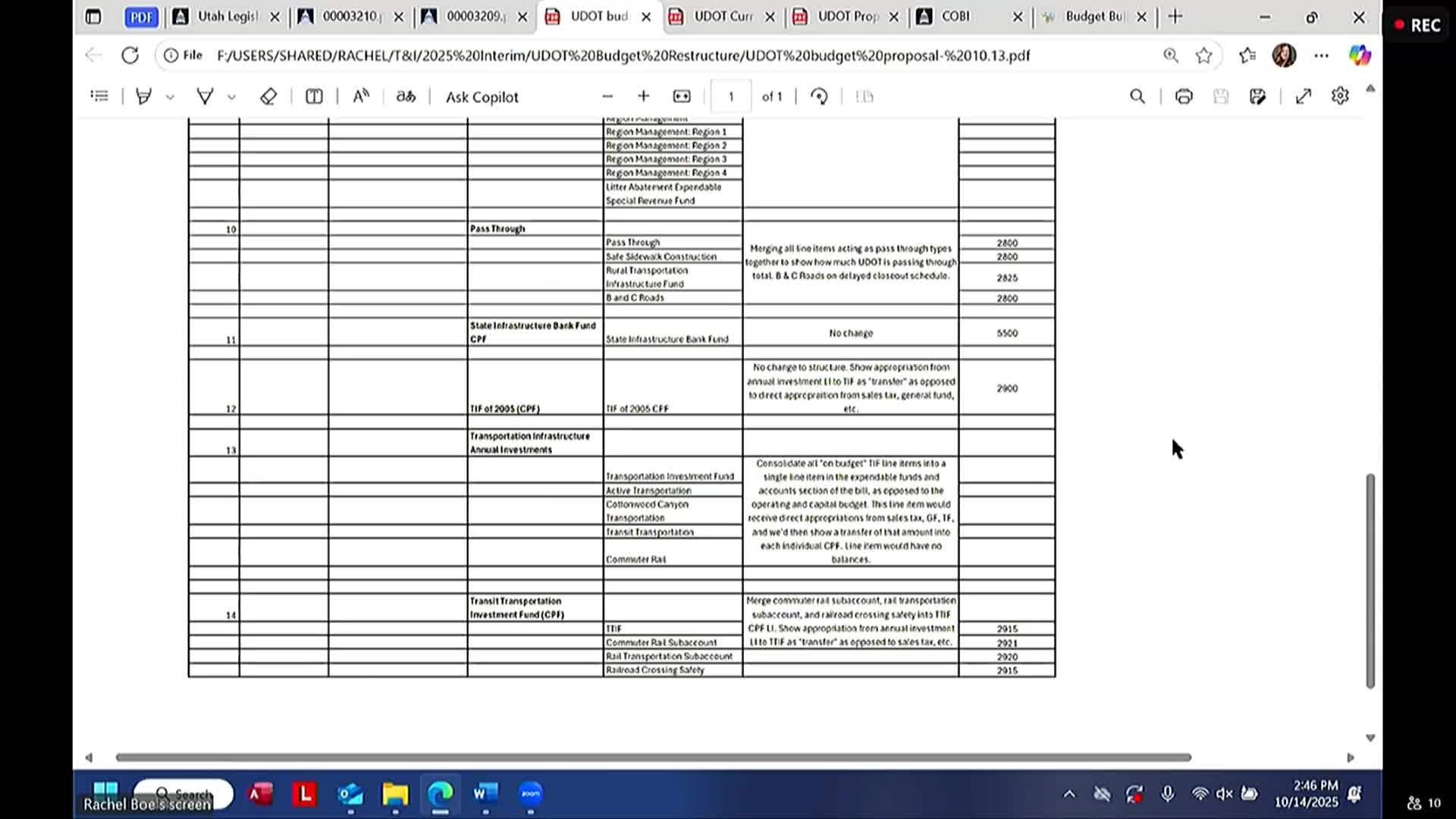USU ASPIRE reports progress on electrified transportation pilots, inland port charging and grid modeling
October 14, 2025 | 2025 Utah Legislature, Utah Legislature, Utah Legislative Branch, Utah
This article was created by AI summarizing key points discussed. AI makes mistakes, so for full details and context, please refer to the video of the full meeting. Please report any errors so we can fix them. Report an error »

Utah State University's ASPIRE Research Center presented its annual report on Oct. 14, describing an action‑oriented research program that combines modeling, industry advisory input and deployments to support electrified transportation across freight, transit, and aviation.
James Campbell, director of the Utah Electrification Initiative, said the center is developing an "intelligent electrified transportation system" that integrates transportation and the electric grid "and ultimately gonna reduce the cost of those systems." The center emphasized modeling and scenario analysis to identify where electrification is cost‑effective today, and where additional technological advances or policy changes would make it viable in the near future.
Key projects described:
- Inland port freight electrification pilot: ASPIRE, in partnership with Kenworth, UPS, Rocky Mountain Power and the Utah Inland Port Authority, installed embedded in‑road charging systems at a rail yard entrance and will field test high‑power stationary chargers, plug‑in options and operations that aim to reduce charging costs for heavy trucks and provide grid value.
- Transit charging tools: ASPIRE has developed software tools for UTA and Heber Valley Transit to optimize electric bus charging and operations, with potential for broader licensing to other transit agencies.
- Listening tours and stakeholder outreach: ASPIRE reported statewide engagement with local governments, utilities and industry to tailor pilot projects to local needs and to surface rural economic development opportunities tied to electrification.
- Advanced air mobility and airport infrastructure: ASPIRE is working with UDOT and airport applicants to assess infrastructure needs for electric aviation and advanced air mobility projects.
Industry involvement: David Echols, chair of ASPIRE's industry advisory board, said the outreach events were "beyond just listening" and emphasized two‑way learning between communities and industry. Regan Zane, founding director of ASPIRE, noted that the work combines modeling with practical, in‑the‑field deployments to validate cost projections and grid interactions.
Ending: ASPIRE staff said they will continue to refine scenario analyses, expand piloting and report back with modeled cost‑benefit scenarios and recommendations to policymakers for where and when electrification projects deliver net benefits.
James Campbell, director of the Utah Electrification Initiative, said the center is developing an "intelligent electrified transportation system" that integrates transportation and the electric grid "and ultimately gonna reduce the cost of those systems." The center emphasized modeling and scenario analysis to identify where electrification is cost‑effective today, and where additional technological advances or policy changes would make it viable in the near future.
Key projects described:
- Inland port freight electrification pilot: ASPIRE, in partnership with Kenworth, UPS, Rocky Mountain Power and the Utah Inland Port Authority, installed embedded in‑road charging systems at a rail yard entrance and will field test high‑power stationary chargers, plug‑in options and operations that aim to reduce charging costs for heavy trucks and provide grid value.
- Transit charging tools: ASPIRE has developed software tools for UTA and Heber Valley Transit to optimize electric bus charging and operations, with potential for broader licensing to other transit agencies.
- Listening tours and stakeholder outreach: ASPIRE reported statewide engagement with local governments, utilities and industry to tailor pilot projects to local needs and to surface rural economic development opportunities tied to electrification.
- Advanced air mobility and airport infrastructure: ASPIRE is working with UDOT and airport applicants to assess infrastructure needs for electric aviation and advanced air mobility projects.
Industry involvement: David Echols, chair of ASPIRE's industry advisory board, said the outreach events were "beyond just listening" and emphasized two‑way learning between communities and industry. Regan Zane, founding director of ASPIRE, noted that the work combines modeling with practical, in‑the‑field deployments to validate cost projections and grid interactions.
Ending: ASPIRE staff said they will continue to refine scenario analyses, expand piloting and report back with modeled cost‑benefit scenarios and recommendations to policymakers for where and when electrification projects deliver net benefits.
Don't Miss a Word: See the Full Meeting!
Go beyond summaries. Unlock every video, transcript, and key insight with a Founder Membership.
✓
Get instant access to full meeting videos
✓
Search and clip any phrase from complete transcripts
✓
Receive AI-powered summaries & custom alerts
✓
Enjoy lifetime, unrestricted access to government data
30-day money-back guarantee


